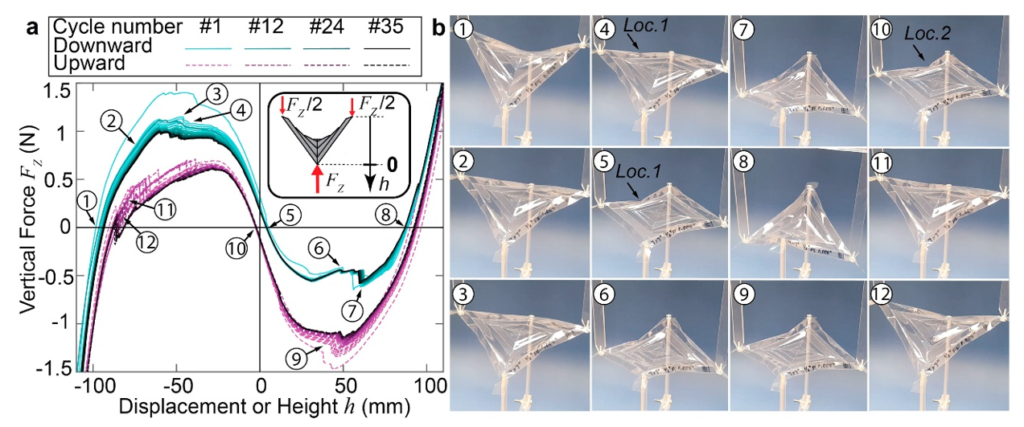
This project explores the mechanical behavior of the origami hyperbolic paraboloid (hypar). The hypar is created from a flat and developable sheet, however, when folded, it forms a bistable three dimensional structure resembling a hyperbolic paraboloid with non-zero Gaussian curvature. We have used experiments to evaluate the global and local behaviors of the structure, which are unique from other bistable origami systems. For the system to reconfigure between the two stable states, each crease first unfolds and then refolds into the new stable geometry. Our work shows that this bistable transition is also affected by stretching of the thin sheet, local buckling in the system, and nonlinear behaviors in the material. We have reinforced our understanding of the hypar behavior by establishing an analytical model that can simulate the kinematics, the buckling, and the force–displacement behavior of the structure. In addition to uncovering the mechanics of the hypar, we have also motivated the future adoption of these systems into functional and practical applications. Because hypars can be created from thin developable sheets, they are suitable for efficient manufacturing through flat patterning and self-assembly. The project has also explored topics for future extension and introduces hypar chains, where multiple hypars are connected in series to achieve multistability. (For more details on this project)
Project Organization:
Principal Investigator: Prof. Evgueni T. Filipov,
Graduate Student: Maria Redoutey
Related Publication:
- E. T. Filipov, M Redoutey. (2018) Mechanical characteristics of the bistable origami hypar, Extreme Mechanics Letters 25, 16-26.
